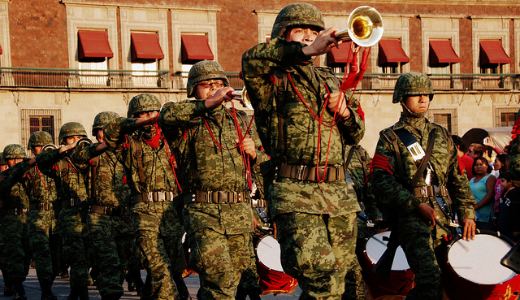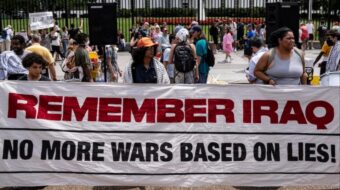
A controversy has arisen over a New York Times article revealing that at least two-dozen CIA agents, as well as those of the Drug Enforcement Agency and other U.S. agencies, are now operating inside Mexico with the full cooperation of the right-wing government of President Felipe Calderon. Although both governments claim that the U.S. agents are operating under the control of Mexican officials, past experiences with the CIA in Mexico and in all of Latin America have set alarm bells ringing.
The CIA and DEA agents are supposedly assigned to help the Calderon government in its bloody war against major drug and crime cartels. After Calderon was declared president in the wake of the much criticized 2006 elections, he announced a military policy toward the cartels, similar to “Plan Colombia,” in which the U.S. government has heavily supported the Colombian military in armed operations. This entailed, eventually, putting 50,000 troops in Mexican cities. In 2008, the Bush administration announced the “Merida Initiative,” whereby an initial $1.6 billion in U.S. aid would be provided to Mexico in support of Calderon’s war. So far, most of this money, which is dwarfed by the tens of millions of dollars the drug trade brings in, has gone to purchase military hardware from U.S. suppliers.
The upshot of Calderon’s war on drugs has been that 40,000 people have been killed, including drug cartel members, police, military personnel and innocent bystanders. There have also been thousands of “disappearances,” and many complaints about human rights violations by the military. Calderon has stated that the high death toll is, in a sense, a good sign because it shows that, having lost a number of leaders to military and police action, the cartels are in turmoil and subordinate leaders are killing each other’s “soldiers” in rivalry for leadership.
But there is strong dissent within Mexico over Calderon’s entire “military” approach. Many question the authorities’ position that the killings and kidnappings are going on only among people mixed up in the drug trade. For example, the Zetas especially have developed a method of kidnapping Central American economic migrants who travel through Mexico to cross over into the United States, holding them for ransom and either enslaving or massacring those who can’t pay. Hundreds, perhaps thousands, have been killed and buried in mass graves, a situation which has led to mass demonstrations in Mexico and diplomatic protests from the governments of Mexico’s neighbors to the south: Guatemala, Honduras and El Salvador especially. Frequently, it is Mexican security personnel themselves who are shaking down immigrants.
Many Mexicans remember the lawless history of the CIA in the region and within Mexico, and so have trouble seeing “the Agency” as a benign presence helping maintain law and order. Activities of the CIA in the 1950s, 1960s and beyond, in which it instigated the Mexican government to crack down violently on the Mexican Communist Party and militant peasants’ and workers’ movements, as well as CIA defector Philip Agee’s revelations about the CIA’s penetration of the Mexican government (in his 1975 book “Inside the Company”), have created the strong impression that the presence of the CIA has political purposes, namely to keep the right wing in power beyond the 2012 general elections. Also not forgotten is the role played by the CIA in the Iran-Contra scandal, which involved drug dealing through Mexico into the United States.
So the CIA has no public credibility in Mexico. The legality of the presence of foreign operatives of this kind was raised as soon as the New York Times story came out. Senator Ricardo Monreal Avila, of the Labor Party said, “Since the days of Santa Anna we have not had such a sell-out and unpatriotic government…the Constitution is being violated, it is direct interference by a foreign government in our internal politics.”
The leader of the center-left Revolutionary Democratic Party, Jesus Zambrano, recalled that the revelation of the CIA presence comes right after the revelations of “Operation Fast and Furious”, in which the U.S. Bureau of Alcohol, Tobacco, Firearms and Explosives, and possibly other U.S. entities including the CIA, deliberately allowed contraband high powered weapons to be smuggled into Mexico. Zambrano warned of a possible “Colombianization” of the situation in Mexico.
Javier Sicilia, poet and head of the Movement for Peace with Justice and Dignity, who has been leading mass marches and demonstrations against Calderon’s “military” strategy in the drug war since his son was killed by cartel operatives in March, denounced the idea of the CIA-DEA presence as “illegal and inadmissible” and demanded that Interior Minister Jose Francisco Blake be summoned to Congress to explain what is going on. Legislators have in fact summoned Blake and also Foreign Minister Patricia Espinoza to hearings.
Sicilia and his organization are now adding the issue of the CIA and DEA presence to that of a new “National Security Law” which would institutionalize the military approach, to a demonstration they are organizing for Aug. 14.
Photo: LWY // CC 2.0










